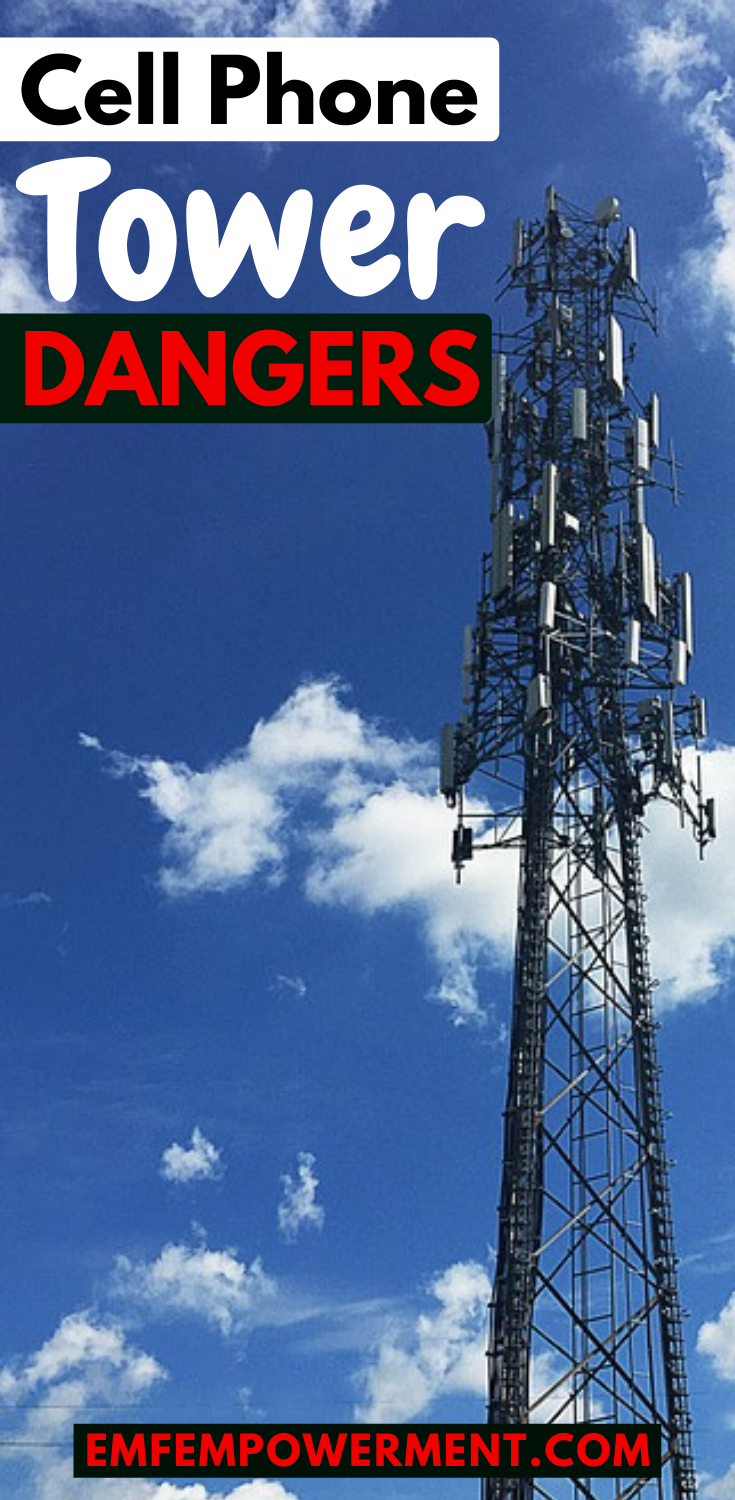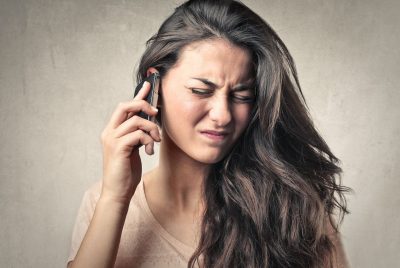On April 3, 1973, the first mobile phone was created. Since then, cell phone technology has…
All About Cell Phone Tower Dangers

*We may earn a commission for purchases made using our links. Please see our disclosure to learn more.
According to the International Telecommunications Union, 95% of the entire world’s population live in an area covered by at least 2G cell coverage. In the United States alone, there are over 300,000 cell towers and base stations. This number will only rise as 5G and the use of millimeter wave towers continues to grow. This connectivity has many benefits, but it also may leave you wondering– are there any cell phone tower dangers?
Indeed, because cell towers are so widespread, some have raised concerns about potential health effects from exposure. The American Cancer Society, in a statement on their website, notes:
“At this time, there’s no strong evidence that exposure to RF waves from cell phone towers causes any noticeable health effects. However, this does not mean that the RF waves from cell phone towers have been proven to be absolutely safe. Most expert organizations agree that more research is needed to help clarify this, especially for any possible long-term effects.”
With that in mind, it’s easy to see why some are concerned. We have no idea what the long-term health effects of exposure are, and yet we are constantly being exposed. We are, in a sense, test subjects.
So while there is a lot that we don’t know, there is a little that we do. On this site, we believe knowledge is power, so let’s take a look at some of the cell tower information that is out there.
How cell towers work
In order to understand the potential dangers of cell phone towers, it helps to have some idea of how they operate. When you make a call, your cell phone sends out a signal in the form of radiofrequency waves. These waves are sent to the nearest cell tower, where they are received. After picking up a phone’s signal, the tower then transmits that signal to an exchange, which is a sort of modern day equivalent to a switchboard operator. The cell phone exchange connects the call, sending waves back to the cell tower and, eventually, your phone.
For a more in depth explanation, check out the video below.
Cell tower radiation
When cell towers produce the signal that they send to your phone or to an exchange, they create what is known as electromagnetic radiofrequency waves. If you’re a frequent visitor to this site, you may know those waves by another name: RF-EMF radiation.
On the electromagnetic spectrum, RF-EMF radiation falls on the non-ionizing side, with a longer wavelength than microwave or infrared non-ionizing radiation. RF-EMF and other non-ionizing forms of radiation lack the energy necessary to split an atom. For that reason, it is not as heavily regulated as X-rays and other forms of ionizing radiation.
To learn more about radiation, head over to EMF Radiation: Everything You Need To Know.
In the United States, the Federal Communications Commision (FCC) is in charge of setting safe levels of RF exposure. Currently, the FCC’s maximum exposure levels for cell towers is 580 microwatts per square centimeter. The organization suggests that this level is unlikely to be experienced by the average individual, because it would require a person to stand a few feet away from the cell tower for several minutes. The FCC does acknowledge that rooftop towers, in particular, could be problematic for maintenance workers or others who may be spending an extended period of time on the roof with the tower. In that case, the organization recommends limiting the amount of time spent in close proximity to the tower.
It’s worth noting that the FCC set these recommendations in 1996. At the time, Congress had tasked the National Council on Radiation Protection and Measurements to investigate RF radiation and determine safe limits. The FCC adopted its current recommendations based on their findings.
The problem, however, is that these regulations are well over two decades old. The devices we use have changed drastically, as has the way we interact with them. And, perhaps most importantly, in the 24 years since the FCC set its limits, new research on RF radiation has become available.
So what does the research say?
Cell phone tower health studies
The first study we’re going to focus on was published in 2004, in the International Journal of Cancer Prevention. Researchers looked at cancer rates for the city of Netanya, Israel after dividing the population into groups based on proximity to a local cell tower. They discovered that females living in close range to the cell tower had a 10.5% relative cancer rate, whereas those living outside of the affected area had a .6% cancer rate. The entire population of Netanya had a cancer rate of 1%. Researchers concluded that the increase in cancer rate was due to living in close proximity to a cell tower.
Next, let’s take a look at a 2011 literature review published in Experimental Oncology. Researchers pouring over data observed that low intensity microwaves, such as the radio waves produced by cell towers, had the power to induce cancer in both humans and animals. They noted that cancer was most likely in those who were exposed regularly for periods of at least ten years, but even those living near a tower for just one year experienced an increased risk of developing cancer. Researchers stressed that current government regulations need to be re-assessed based on newer data.
A 2003 study from the Electromagnetic Biology and Medicine journal focused on proximity to cell towers and Electromagnetic Hypersensitivity. Researchers gave a survey to a group of 530 individuals. They asked them questions about their symptoms and noted how close they lived to a cell tower. When analyzing the results of their survey, they found that EHS symptoms such as nausea and hallucinations were most common amongst those living up to 10 meters away from a tower. Those living 100 meters away, on the other hand, were more likely to experience depression and irritability, while those living 200 to 300 meters away experienced fatigue.
In 2013, the Journal of Electromagnetic Biology and Medicine published a study on oxidative stress in rats and exposure to a model antenna. They found that the rats who were exposed to radiofrequency waves generated by the antenna experienced a decrease in antioxidant enzymes and an increase in malondialdehyde (MDA). In other words, the rats experienced an increase in oxidative stress. Oxidative stress has been shown to have negative reproductive effects.
Cell phone tower dangers
One of the greatest potential risks of prolonged exposure to a cell tower is cancer. This risk may be increased in children and babies, due to their thinner skulls. Other potential health effects include male infertility, miscarriages in pregnant women, neurological conditions, and alterations in sleep and metabolism.
Those with Electromagnetic Hypersensitivity may also be at an increased disadvantage due to the abundance of cell towers out there. Typical symptoms of EHS may include nausea, dizziness, insomnia, irritability, itchiness, and heart palpitations. As the study we discussed above suggested, these symptoms may vary based on your proximity to an electromagnetic source.
What about 5G?
In this section, we’ll briefly touch on the basics of how 5G works — for more detailed information, check out 5G Technology Explained.
There are actually three types of towers that broadcast different types of 5G signals. Low-band and mid-band towers have signal ranges and strengths similar to what we see now with 4G. While their implementation requires more towers to be put in place, these towers will someday, in theory, completely replace their 4G counterparts and likely carry similar risks.
Things get sketchier, however, when we start to look at the third type of 5G tower: high-band. Also known as millimeter wave towers, high-band requires line of sight to work effectively. In urban neighborhoods with many obstructions, that means quite a few towers are needed in order to blanket the area in a signal. So now, you have cities with high-band 5G towers mounted on streetlight poles, rooftops, and sporting arenas.
The problem? Those are all areas where people may frequent. And if you recall, the FCC’s regulations explicitly state that an individual should not spend extended periods of time in close proximity to a cell tower.
Now, the loophole here is that high-band broadcasts at a different frequency than other forms of 5G or 4G. High-band 5G runs from 24 to 39GHz, a spectrum that is still subject to the FCC’s 1996 regulations but that has been studied even less.
We can’t definitively say that 5G towers have negative health effects. However, we also can’t say that they don’t have negative health effects, and therein lies the problem. We simply do not know, and yet we are adopting the technology as quickly as we can.
Final thoughts
If you’re concerned about cell phone tower dangers, you’re not alone. The first step towards protecting yourself is identifying how close you are to nearby towers. For help locating 4G towers, head over to Locating Cell Towers Near Me. And for help with 5G towers, we have Locating 5G Cell Towers Near Me. 



